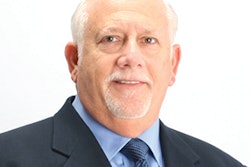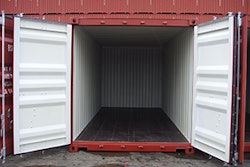Feb. 13--MUMBAI -- Suhas Bhide , in his role as International Business Machines Corp.'s (IBM) general manager of global delivery in India, manages operations and strategy at the local centre and is responsible for building of customer-focused solutions for the company's consulting and application services business. In an interview on Wednesday, he explained how SMAC (social, mobility, analytics and cloud) technologies are changing the face of businesses. Edited excerpts:
How is data changing the IBM delivery services model?
Historically we looked at transactional computing and its traditional applications that we have been working on like ERP (enterprise resource planning) and finance that record data about transactions. This is what we call a system of records. Now we are increasingly focusing on a system of engagement. These are the systems that help analyse and track the engagement level between people and people, between people and companies and companies and companies. So the whole area we call is the digital front-office.
As we go forward, the focus will be to look at taking advantage of the system of records and system of engagement and evolve into a system of insights, which will be able to put together a system to develop insights about the business or relationships. For example, banks who want a 360 degree view of their customers. What we have done jointly with the European bank is develop a customer data architecture that permits them to have real-time client data and look at the entire relationship with their customers across all their verticals.
How are the so-called disruptive SMAC technologies changing the way enterprises work?
We are seeing this trend for about four years. Four years ago, we called out for a smarter planet. We had said that the world was getting increasingly instrumented and interconnected and because of that world could become more intelligent. So that was our theme, instrumented, interconnected and intelligent. That's exactly what has happened. The instrumentation and the interconnection has taken the form of SMAC. The trend is that you have more and more instruments out there -- smartphones, sensors, cameras, etc. All of these are beginning to talk to each other more and more.
In our perspective, we see this evolving towards a scenario which we call everyone to everyone, where traditional boundaries between B2B (business to business) and B2C (business to consumer) would overlap, and you will see innovation going from the B2C (business to consumer) world to the B2B world. Traditional value chains will collapse. Value chains will morph into value networks.
Crowdsourcing is another major trend. For example, there is a US-based sports and casual shoe manufacturer whose customers design shoes and gift them to each other and if the design gets popular and sells more, these customers get rewarded with free shoes. Now, historically the responsibility of designing shoes was with manufacturer, but now they are saying: If you want a shoe with this colour and that design, go design it, here are the tools and apps. So a completely different business model is emerging.
Will such a model work in India?
Four to five years ago, Lays chips started a design-your-own-flavour competition. That's the example of crowdsourcing. They didn't do it online, you had to write to them. But imagine if they could, if they said send your recipe on the Web, if they said we have 1,000 outlets, you could go and design it on the spot there, then things would be different. So there are many different models, where companies can engage with their customers and clients in a very different manner.
For example, look at what we are doing with Digicom in Delhi. The project is a pilot. We are helping them deploy smart metering and a smart grid. There is an intelligent meter device in every premise. It can track and identify usage patterns at a micro level and can do peak saving. Historically, when there is a peak load, there is an outage and shutdown. Today, they can actually control that. Going forward, you can let users set their own parameters for usage and be able to change tariffs accordingly. That is what we see in the world of utilities.
How does all this translate into a business opportunity?
For the first time, we are seeing data becoming more valuable than the value of the transaction it represents. Data is now like a natural resource, it is everywhere, like iron ore or copper ore. To get value out of it, you need to extract it, refine it and then use it properly. It is not useful until I can monetize it. So the system of insights is going to be the key, because it will let you monetize data.
What is IBM focusing on?
We currently serve 17 verticals, but there are a few areas that we are focusing on. One is the whole area of data, big data, management and analysis. The second is cloud, not as a technology but as enabler of new operating models. And the third is a system of engagement and a system of insights.
Are you looking at new partnerships in India?
We have done a large number of acquisitions. In 2013, we did $16 billion worth of acquisitions globally. We have spun off the Watson group, committed $1 billion to take our cognitive computing platform as a social value creation for our clients. We have invested very significantly in flash technology because with all this data, reliable high-speed data access is going to become very critical and flash technology plays a role there. We have made a big commitment to big data and analytics.
Copyright 2014 - Mint, New Delhi












